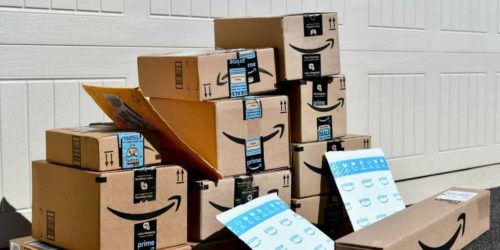AdWords is Google’s Pay Per Click (PPC) advertising platform. Here’s how it works: you choose a key-phrase you want to target, set a maximum spend and a price per click, and then wait for the clicks to roll in.
Basically, every time someone searches for the search string you have selected, a ‘bidding war’ will ensue between you and other advertisers that are targeting the same thing. If you win, your ad will show just above the organic search results or to one side. As Google is the go-to search engine for most people, AdWords is a highly effective way to attract traffic.
Many big brands rely on AdWords to bring in traffic, and the network has seen a lot of investment over the years ($1.34 billion in 2013). But what can we learn by looking at the biggest players and what they have in common? If you’re interested, Google has a more detailed guide to using AdWords
Who Are the Heavy Hitters?
Check out these interesting facts about AdWords spending! In 2013, the biggest AdWords spenders were Amazon, Priceline Group, AT&T, Expedia, Microsoft, Experian, Wal-Mart, Sears Holdings Corp., and IAC1. Can you believe that Amazon only spends about $1 a day on AdWords, yet it still manages to make it to the top of the list? That just shows you how much return on investment they’re getting from their ads!
If we look at industries, the top spenders across all of Google’s advertising platforms in 2011 were in Finance & Insurance, retail and merchandise, travel & tourism, Jobs & Education, and Home & Garden.
What Do These Spenders Have in Common?
So, what do the top AdWords spenders have in common? Most of them are big e-commerce and Fortune 500 companies. No surprise there – it makes sense for them to advertise their products and services online, where they’ll get the most sales. That means they can make direct sales and get an immediate return on investment.
It also makes sense that the richest companies would spend the most on advertising. We’ve seen that in successful social media campaigns by big brands like CocaCola and RedBull. They can spend a lot on advertising because they’re big, and they’re big because they can spend a lot on advertising. So, if you’re a small start-up, watch out! You’re competing with these giants.
What’s interesting, though, is that more than half of Google’s top spenders sell their products mostly offline. Amazon is at the very top, followed by Expedia, but further down the list, there are more retailers like John Lewis and Walmart.
It’s important to remember that these companies also sell online, but offline businesses have had more time to grow to big levels. It’s also worth noting that people still spend more money on physical products than on digital products. So, if you only sell digital products, you may be missing out.
It’s also worth bearing in mind that companies like John Lewis are probably as interested in increasing brand awareness as they are in direct sales. AdWords can be a very useful tool for this kind of marketing as well. If you want to learn more about how AdWords can benefit your business, talk to us and find out more





